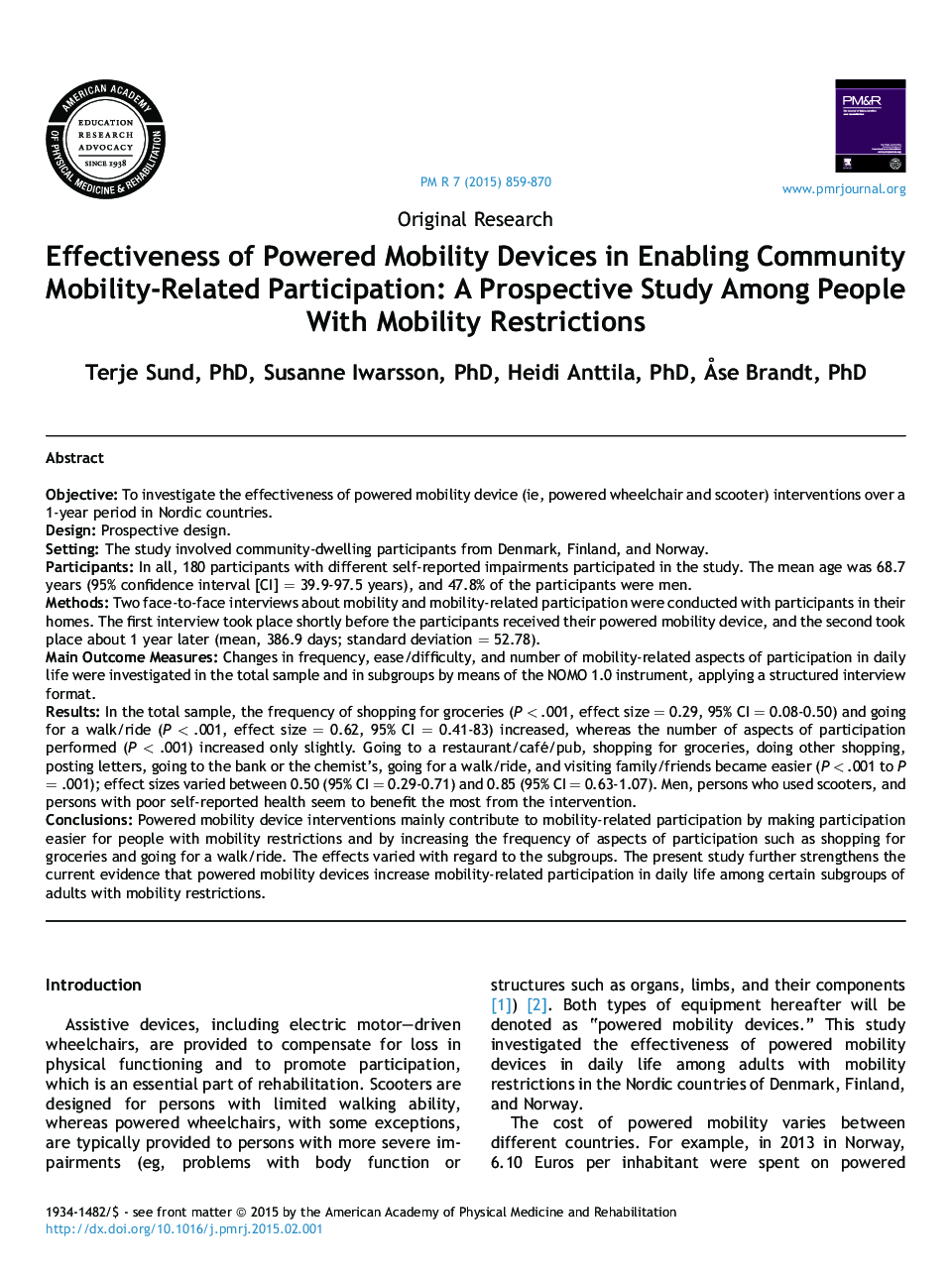| Article ID | Journal | Published Year | Pages | File Type |
|---|---|---|---|---|
| 2706958 | PM&R | 2015 | 12 Pages |
ObjectiveTo investigate the effectiveness of powered mobility device (ie, powered wheelchair and scooter) interventions over a 1-year period in Nordic countries.DesignProspective design.SettingThe study involved community-dwelling participants from Denmark, Finland, and Norway.ParticipantsIn all, 180 participants with different self-reported impairments participated in the study. The mean age was 68.7 years (95% confidence interval [CI] = 39.9-97.5 years), and 47.8% of the participants were men.MethodsTwo face-to-face interviews about mobility and mobility-related participation were conducted with participants in their homes. The first interview took place shortly before the participants received their powered mobility device, and the second took place about 1 year later (mean, 386.9 days; standard deviation = 52.78).Main Outcome MeasuresChanges in frequency, ease/difficulty, and number of mobility-related aspects of participation in daily life were investigated in the total sample and in subgroups by means of the NOMO 1.0 instrument, applying a structured interview format.ResultsIn the total sample, the frequency of shopping for groceries (P < .001, effect size = 0.29, 95% CI = 0.08-0.50) and going for a walk/ride (P < .001, effect size = 0.62, 95% CI = 0.41-83) increased, whereas the number of aspects of participation performed (P < .001) increased only slightly. Going to a restaurant/café/pub, shopping for groceries, doing other shopping, posting letters, going to the bank or the chemist's, going for a walk/ride, and visiting family/friends became easier (P < .001 to P = .001); effect sizes varied between 0.50 (95% CI = 0.29-0.71) and 0.85 (95% CI = 0.63-1.07). Men, persons who used scooters, and persons with poor self-reported health seem to benefit the most from the intervention.ConclusionsPowered mobility device interventions mainly contribute to mobility-related participation by making participation easier for people with mobility restrictions and by increasing the frequency of aspects of participation such as shopping for groceries and going for a walk/ride. The effects varied with regard to the subgroups. The present study further strengthens the current evidence that powered mobility devices increase mobility-related participation in daily life among certain subgroups of adults with mobility restrictions.
